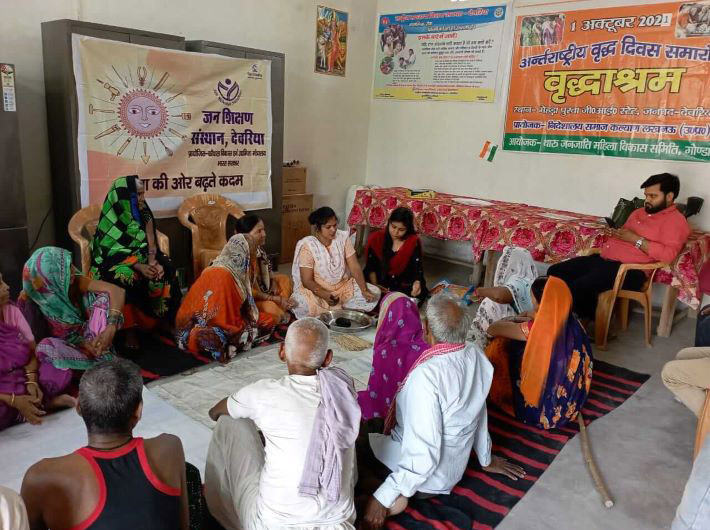An excerpt from Shashank Mani's new book, ‘Middle of Diamond India: National Renaissance through Participation and Enterprise’
Shashank Mani's ‘Middle of Diamond India: National Renaissance through Participation and Enterprise’ (Penguin Viking) reveals the hidden stories of those in the Middle, that is, those in the tier 2 and tier 3 cities, who have been overlooked owing to their location and language.
 With an impressive early praise from Nobel laureate in Economics Prof. Edmund Phelps, former Director CSIR Prof R.A. Mashelkar, Professor Harvard Business School and Director Mittal Institute at Harvard Tarun Khanna and others, Mani's book outlines a new vision of India over the two decades.
With an impressive early praise from Nobel laureate in Economics Prof. Edmund Phelps, former Director CSIR Prof R.A. Mashelkar, Professor Harvard Business School and Director Mittal Institute at Harvard Tarun Khanna and others, Mani's book outlines a new vision of India over the two decades.
Through stories, anecdotes and deep research with the back drop of Jagriti Yatra, a 15-year-old initiative focussed on Middle India energizing 7500 leaders in the process, leading a unique movement of ‘Building India through Entreprise’, Mani's ‘Middle of Diamond India’ outlines the rise of the Middle and traces the historical and social forces that can guide the politics of development going forward.
This timely and definitive book challenges CK Prahlad's ‘Bottom of the Pyramid’ theory and seeks to shift the economic, social and political centre of gravity of India from the middle to those who can be called the emerging middle class.
Shashank Mani is the founder of the Jagriti Yatra and the Jagriti Enterprise Centre—Purvanchal (JECP). With a BTech from IIT Delhi and an MBA from the IMD, Lausanne, he has worked in both corporate and government sectors as a strategist and visionary, serving on the $5 trillion committee of the commerce ministry.
Here is an excerpt from the concluding book:
Committing to the Banyan Revolution in the Amrit Kaal
A few months before completing this book, I attended the Independence Day celebrations on 15 August 2022 at Red Fort. I left my job that day to focus on Middle of Diamond India over the Amrit Kaal starting with the development of Deoria and Kushinagar by seeding the Banyan Revolution. This broadly coincides with the Vanaprasta ashram of my life, and I hope to work for my region over the coming twenty-five years, an act named Kshetra Sanyas by Ashutosh Kumar, Jagriti’s CEO in his recent TEDx talk.
Those who want to commit to developing their own area through a similar process can connect with me at shashank@shashankmani.in and follow the progress of the Banyan Revolution on www.shashankmani.in, or on my Facebook (Shashank Mani) page, to support this cause. You can also associate directly with Jagriti by coming on the Yatra by applying on www.jagritiyatra.com or by visiting us in Deoria at the JECP with details on www.jecp.in.
I outline below how Yatris, Individuals, Women, Corporates, Government Institutions, Political leaders, Non-Governmental Organizations, Academic Institutions, Non-Resident Indians (NRIs), and international well-wishers can support this movement.
Yatris: are ambassadors of this book, for they have experienced much of what I have written here. They should spread the word on the Banyan Revolution, educating others to come on the Yatra, and join as JADE, while using the JECP as a second home to refine and hone their ideas on udyamita.
Individuals: can adopt a region where they support local enterprise, become entrepreneurs, support policies that drive udyamita and volunteer time as mentors, support through finance, experience the real India through efforts such as the Jagriti Yatra or JECP.
Women: have a special responsibility to give support to each other to take the path of udyamita and realize their full potential. They can join the Yatra, create enterprise locally, and support each other as entrepreneurs, mentors, market connectors, and financiers.
Corporates: as entities closest to national and international markets can support the movement through value chain integration, use CSR money for creating an enabling environment, and extend mentoring and volunteering opportunities for employees.
Government: should create an enabling environment and policy by understanding the movement, sending officers to the JECP and to the Jagriti Yatra to experience udyamita, and create infrastructure in the Middle to enable udyamis and the Banyan Revolution.
Political leaders: are closest to the citizen in the Middle and can support by helping propagate the values of udyamita among their constituents and by supporting enterprise infrastructure. They can challenge voters for sabka prayas by asking them to become builders and creators, not just voters.
Non-Governmental Organizations (NGOs): should examine the multiplier impact of udyamita and contribute through partnerships, and through supporting social entrepreneurs to scale up their efforts entrepreneurially, and in backing enterprise clusters and institutions.
Academic Institutions: shape minds and attitudes early and should examine out-of-class and out of off-campus opportunities, such as Jagriti Yatra and JECP, encouraging students to learn by wandering and inviting them to look beyond the surface to explore the Middle
Non-Resident Indians (NRIs): are naturally tuned to enterprise and can contribute by understanding the Middle by visiting the JECs and travelling on the Jagriti Yatra. They should send their children to the Jagriti Yatra and the JECs to experience the real India.
International supporters: bring the rational perspective of an outsider and can contribute by understanding the real India, challenge Indian assumptions while helping support the movement by offering market linkages and finance. Some may want to replicate this movement in their own countries.
The Amrit Kaal needs the energies, ideas, resources, and commitment of every person interested in the development of India. This is an act needing urgent attention, for this is our last chance, as well as a glorious opportunity.
[Excerpt published with the permission of the publishers.]
